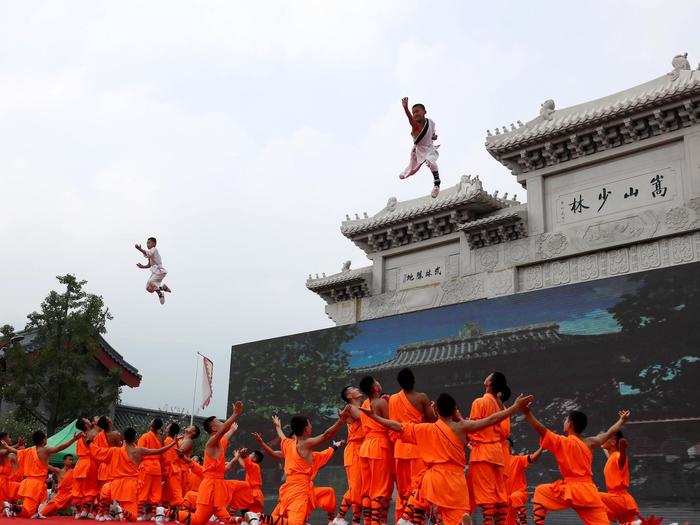- Home
- slideshows
- miscellaneous
- Inside Shaolin Monastery, the home of kung fu and Zen Buddhism, where thousands of boys as young as 5 train to be martial arts masters
Inside Shaolin Monastery, the home of kung fu and Zen Buddhism, where thousands of boys as young as 5 train to be martial arts masters
Welcome to the Shaolin Temple, the original home to Kung Fu, an ancient Buddhist complex that's survived attacks from warlords and the government.

It's nestled in forests at the base of a misty, holy mountain in the province of Henan, one of China's poorest areas.

Source: The Guardian
Within these walls, first erected in 495 AD to teach Buddhism, thousands of eager students have come to learn kung fu, hoping to become warrior monks. Because of all the attacks over the years, most of the temple buildings standing today were built in the last 100 years.
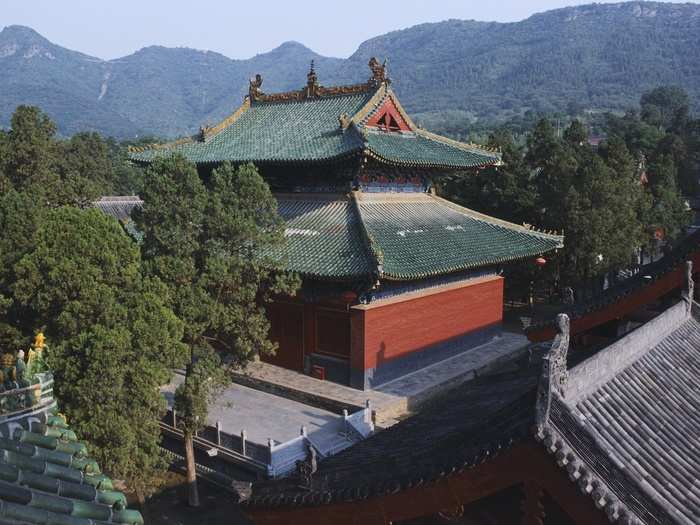
Sources: China Daily, South China Morning Post Magazine
From as young as five, students join the temple, and follow a regimented life of rigorous strength and flexibility training. But it's more than just a physical education.
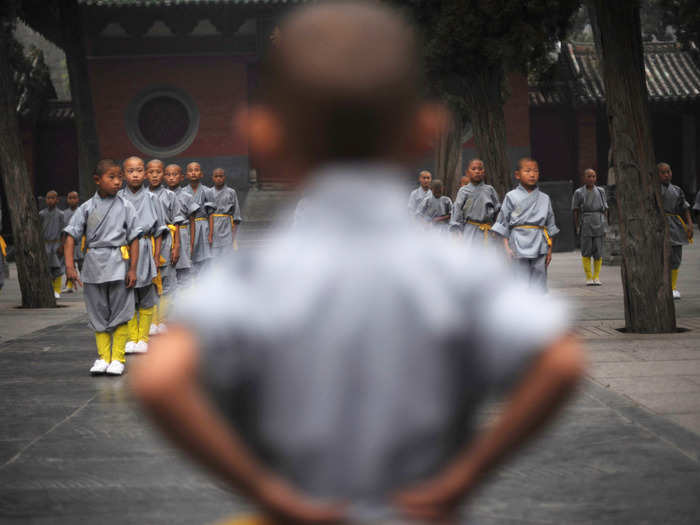
Source: The Guardian
For 1,500 years, monks have sought enlightenment, through meditation, or by studying ancient Buddhist scriptures. As Shaolin Temple's foreign liaison officer told The Guardian, Shaolin represents "justice, uprightness, sympathy, and love."
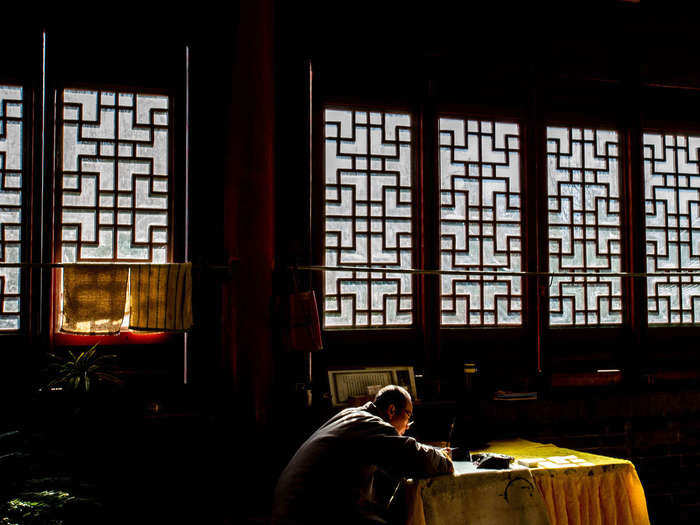
Source: The Guardian
Kung fu can be traced back to 527 AD, when the temple was taken over by Bodhidharma, an Indian Buddhist. The story goes that he sat in a cave nearby, meditating for nine years. It was such intense meditation that an imprint of his shadow was left on the wall after he'd finished. The image here is that shadow cut out and preserved.
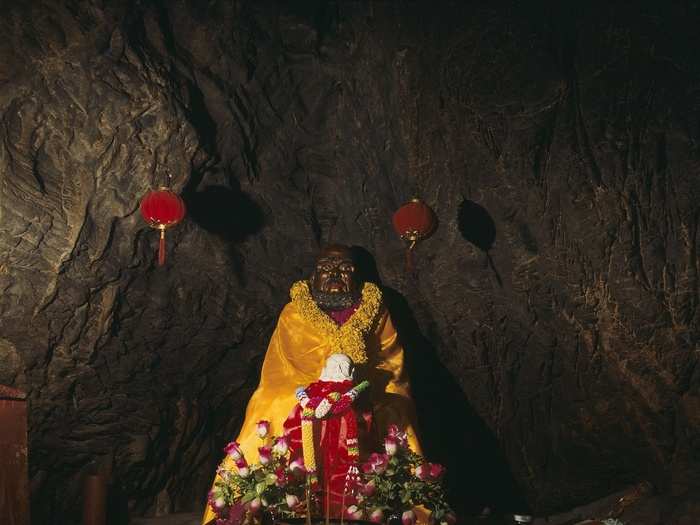
Source: The New York Times
It was while Bodhidharma was stretching out during the nine years of meditation that he began to do the movements that would become kung fu. According to local guidebooks, his disciples also copied animal movements to relax between meditations, which would become kung fu techniques.
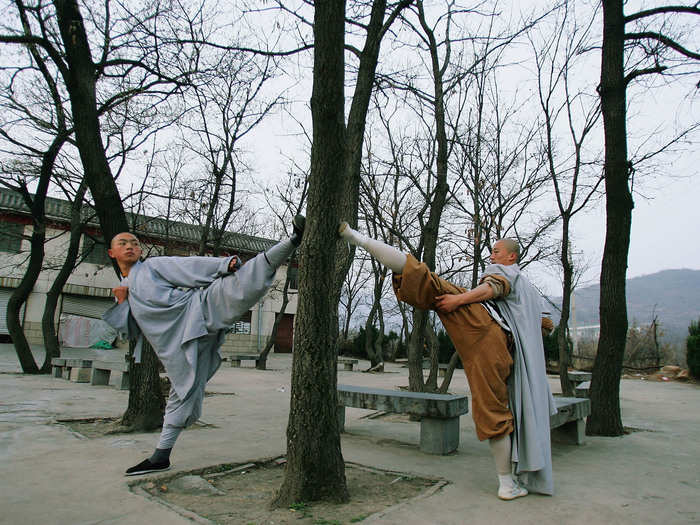
Sources: The New York Times, The Guardian
What happened after that isn't so clear. At some point, the movements were refined into combat techniques that monks could use to either rob the rich to give to the poor, or to defend their own wealth from bandits.
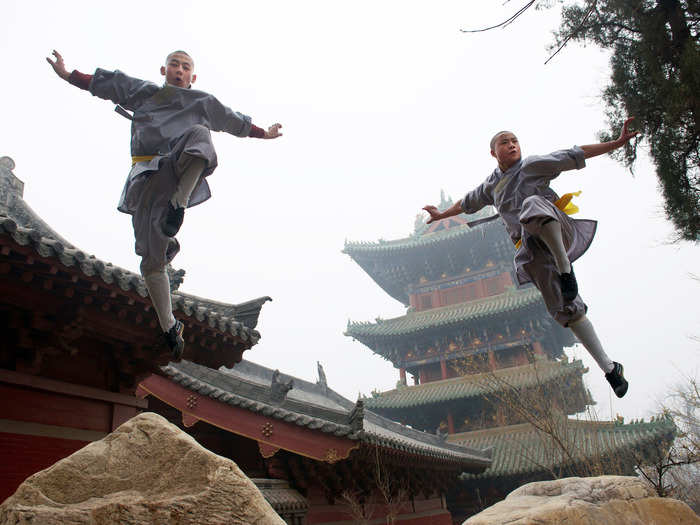
Source: The New York Times
The "golden age" of the Shaolin Temple was from 618 to 1644 AD, spanning the Tang and Ming Dynasties. In 621, the temple gained some favor, the story goes, when a band of 13 Shaolin monks kept a Chinese prince in power by fighting off an enemy warlord for him.
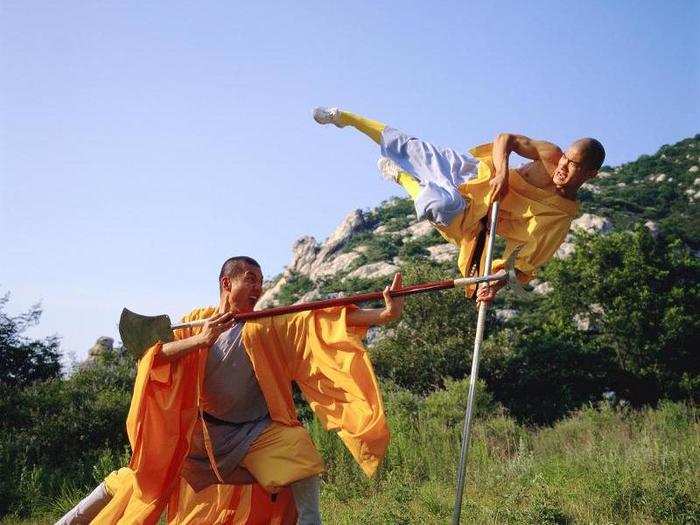
Source: The New York Times
In 1553, Shaolin monks left the temple again. This time 30 monks headed to the Chinese coast to fight off Japanese pirates.
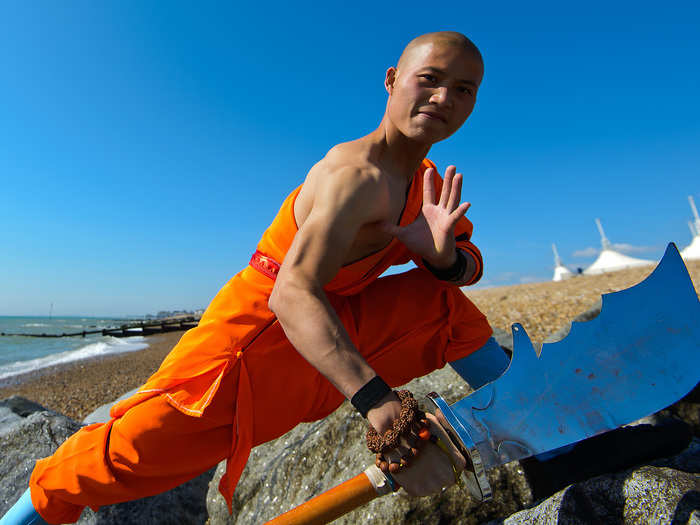
Sources: The Guardian, Telegraph, Vice
When the temples were attacked in the 17th Century, legend has it that five fugitive warrior monks made it out and spread kung fu across China, eventually resulting in the creation of karate, as well. Scholars dismiss much of this as exaggerated tales.
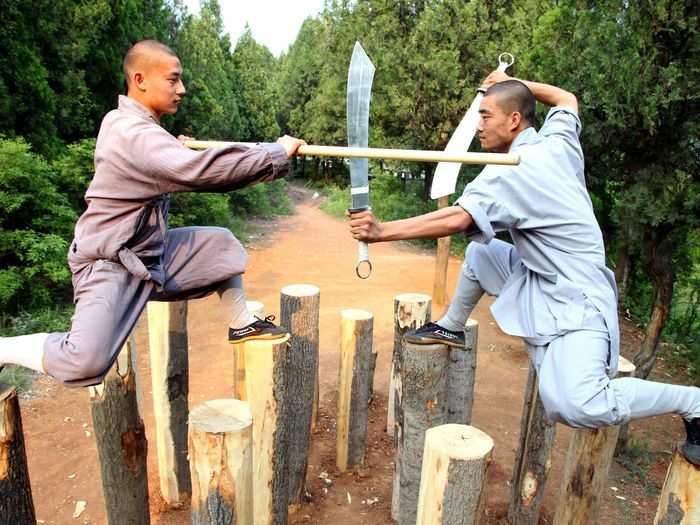
Sources: The Guardian, Telegraph, Vice, National Geographic
In 1928, General Shi Yousan, a warlord, tried to burn the temple down, because his enemy had used it as a base of command. After covering the buildings in kerosene, he shot most of the buildings to scorched rubble. Importantly, he destroyed the temple's library, which was filled with Shaolin theory and history, and was the "soul" of the temple according to National Geographic. It meant teachings and the temple's legacy had to be passed down from master to student.

In the 1960s, during China's Cultural Revolution, Chairman Mao's Red Guards also attacked the temple, destroying buildings and religious items. Monks were told they could no longer live there. And the guards forced them to eat meat and drink alcohol, which resulted in the saying: "Alcohol and meat only pass through your digestive system, but Buddha is within."
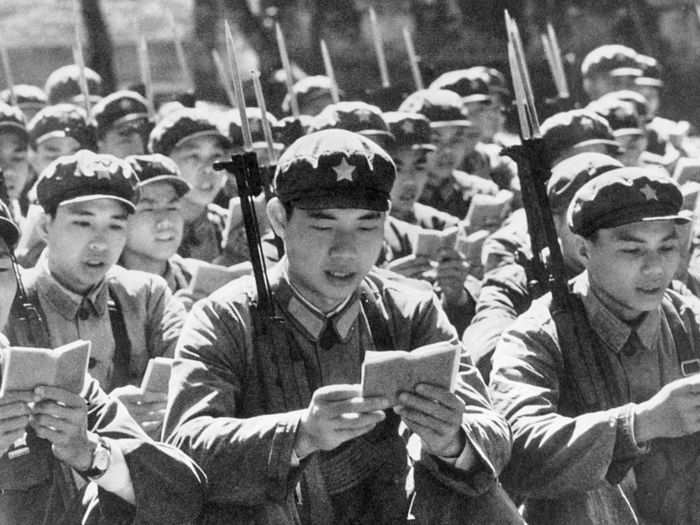
In 1979, when the temple officially reopened, only 11 old monks were left. They started teaching again. But the temple couldn't quickly shake off the stigma that had settled on it after the Cultural Revolution.
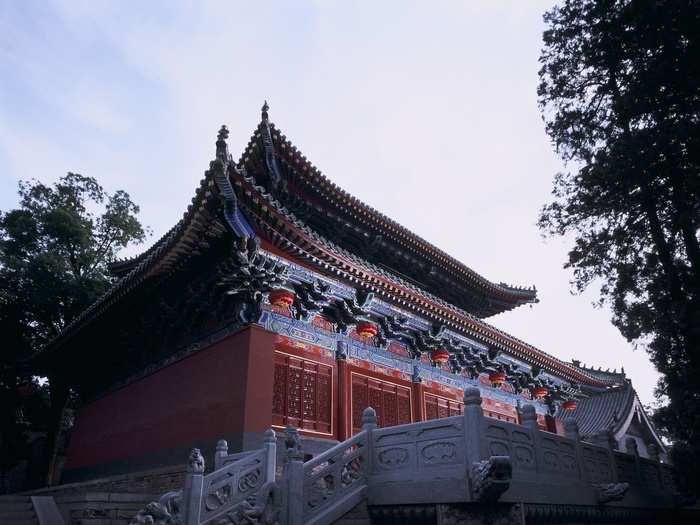
Sources: The Guardian
In 1982, kung fu master Jet Li helped bring on the temple's renaissance, when he starred in the local martial arts film "Shaolin Temple." It was based on the legend behind the temple. He was paid $750 for two years' work. While filming at the temple, the crew was shocked to the find so few monks.
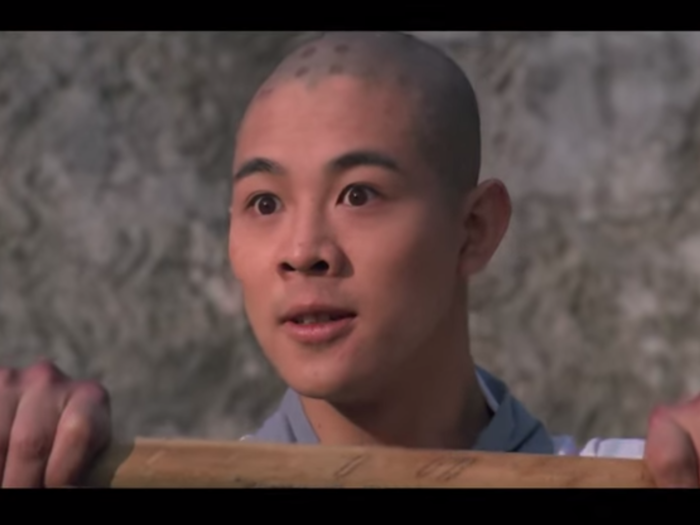
Li broke into Hollywood in 1991, in the film "Once Upon a Time in China." From there his reputation grew. He was soon known as "The king of kung fu," and with him, the temple's reputation grew, too.
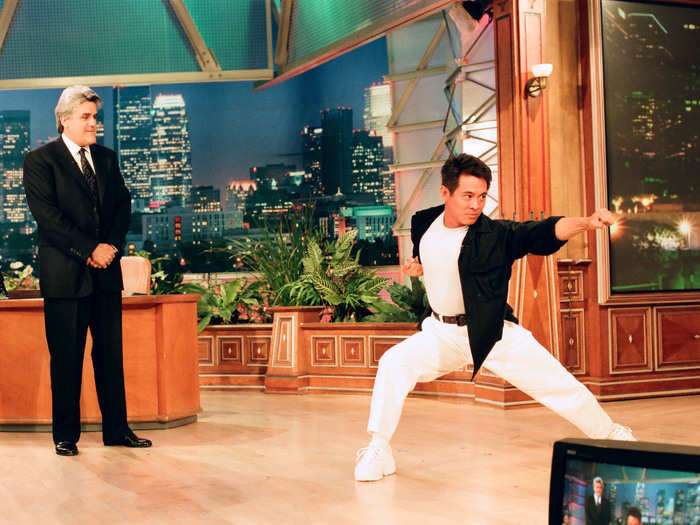
Sources: The Guardian, Business Insider, The New York Times
Along with Hollywood popularizing the temple, one other factor propelled the temple's resurgence — Shi Yongxin, who became the temple's abbot in 1999. Shi would bring about massive changes to the way the temple was run, and not all of them have been praised.
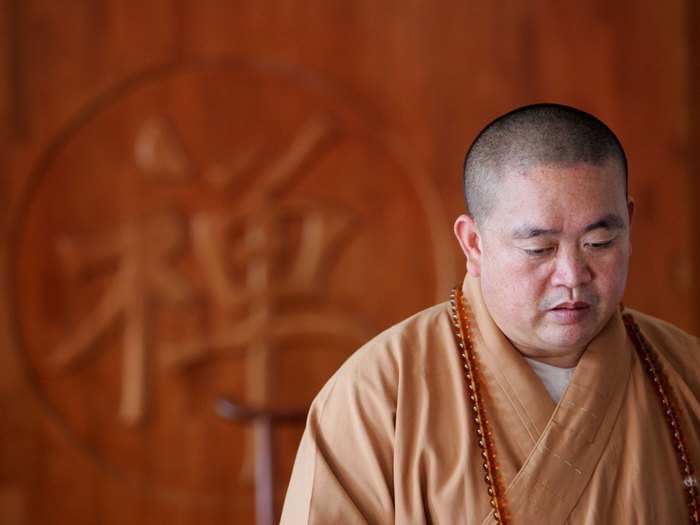
Sources: CNN, The Guardian
As a young monk he'd already shown his ambitions for the temple when he organized a celebration for the temple's 1,500-year anniversary to bolster attention. He also successfully sued a sausage company that used the temple's name for advertising. He was outraged the symbol was being used to sell meat. These two victories, honing attention to the temple and defending the brand, would become a key part of Shi's strategy.

Source: Caixin Global
He's repeatedly said Zen Buddhism is the temple's priority above martial arts. In 2005, he explained his monk's lifestyle to The New York Times, and in doing so, didn't even mention kung fu, instead focusing on meals and lessons.
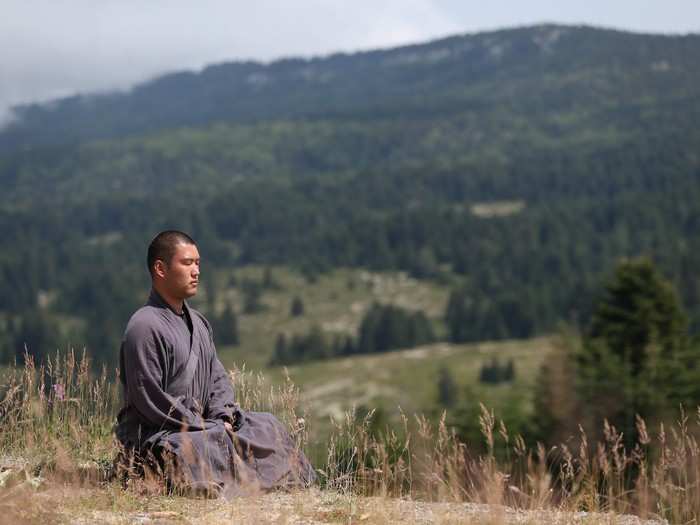
Sources: The New York Times, The Guardian
Despite Shi's adamance, kung fu is the temple's real drawcard. As Jonathan Watts wrote for The Guardian, "Kung fu devotees are drawn to Shaolin in the same way that budding actors are drawn to Hollywood."
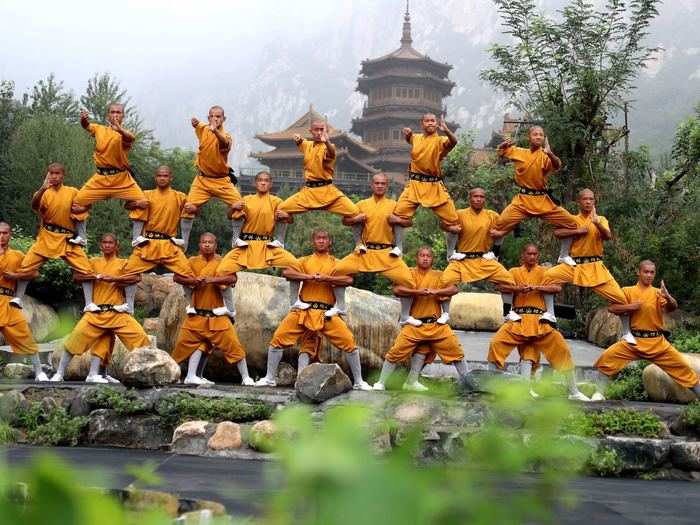
Source: The Guardian
It's especially the case for children from poor backgrounds. The opportunity to train as a martial artist could lead to a job as a guard, a position on a national kung fu team, or international fame. It's a way to for them to kick and punch their way out of a normal life.
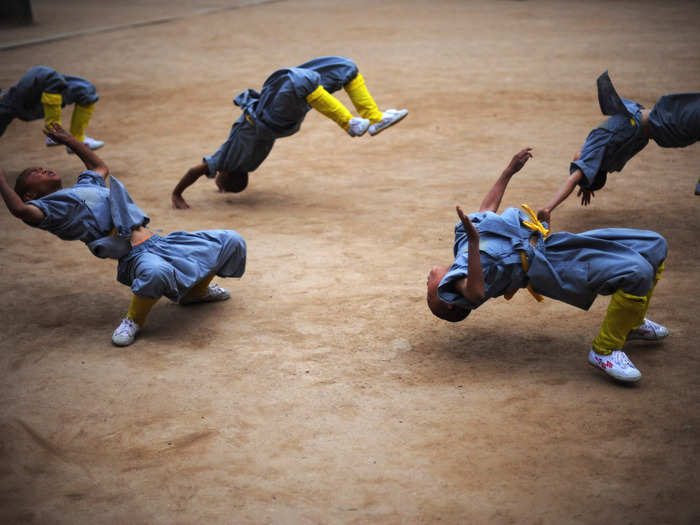
Source: The New York Times
But becoming a warrior monk is no minor feat. Their day-to-day life shows the dedication that's needed. It's intense and rigorous, but it's also predictable and cyclical.
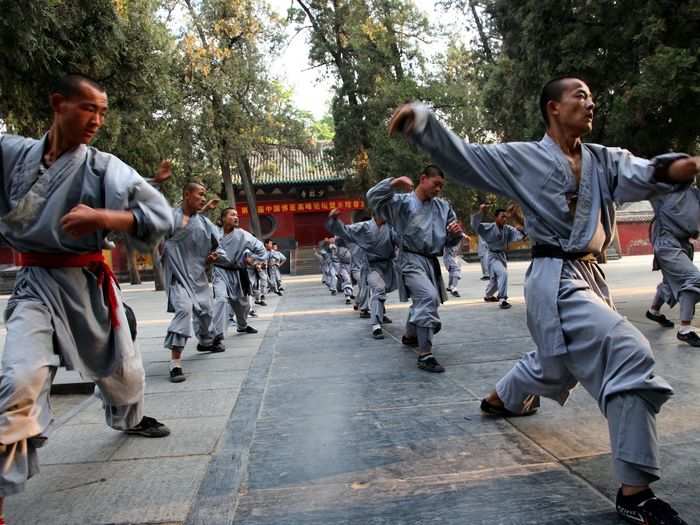
Sources: The Guardian, The Guardian, Medium
In the Shaolin Temple, a typical day begins at 5.30 a.m. when a young monk walks through the temple beating a wooden board to wake his peers. The monks sleep six to a room.
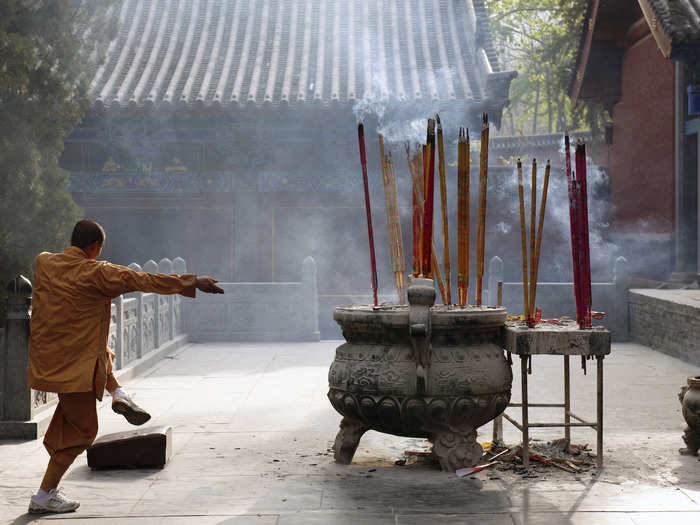
Sources: The Guardian, The Guardian, Medium
Before dawn, monks say their morning prayers and chants.
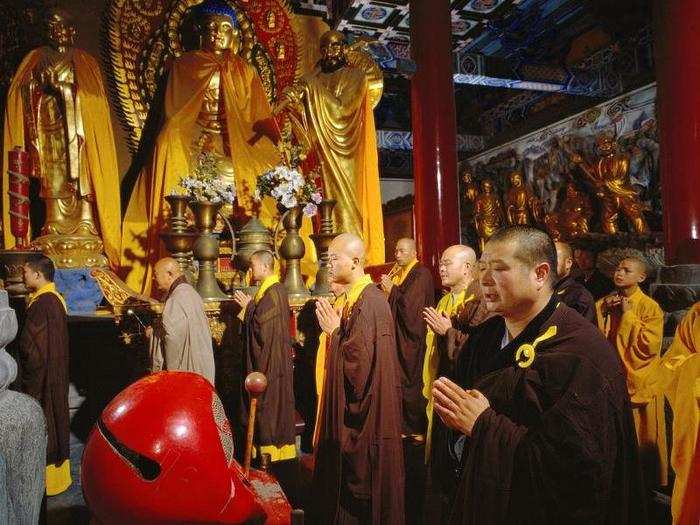
After that it's breakfast at 6 a.m. Shaolin Monks don't eat meat, so it's vegetables and porridge for everyone, except the warrior monks who also eat two eggs.
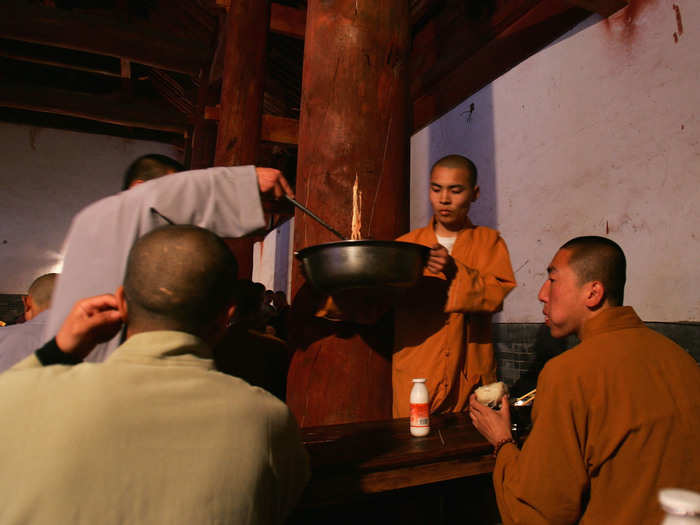
Sources: The Guardian, Huff Post
In the morning, monks spend two hours in kung fu training. Every 10 minutes the monks switch the style they're practicing. The monks train with 36 different types of weapons and each choose two animal styles — either tiger, leopard, snake, dragon, or crane — to focus their trainings on. They have another two-hour session in the afternoon.

Sources: Huff Post, Independent
Monks practice thousands of different martial art movements, with names like "sweeping an army of thousands," or "flowers hidden among the leaves."
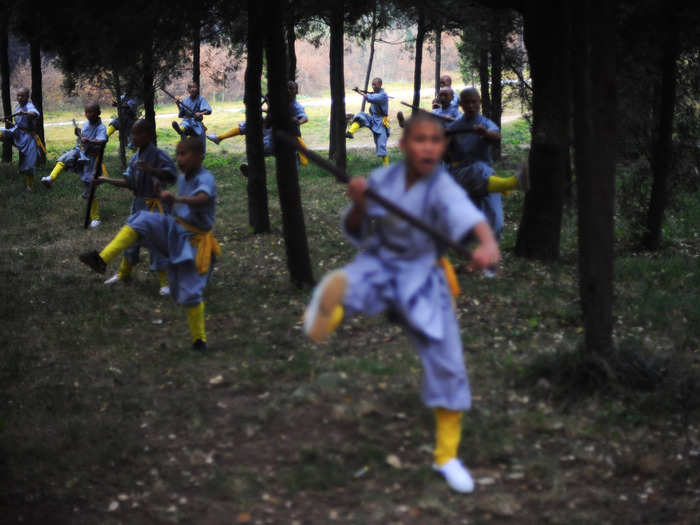
Source: The New York Times
Practice continues in the snow.
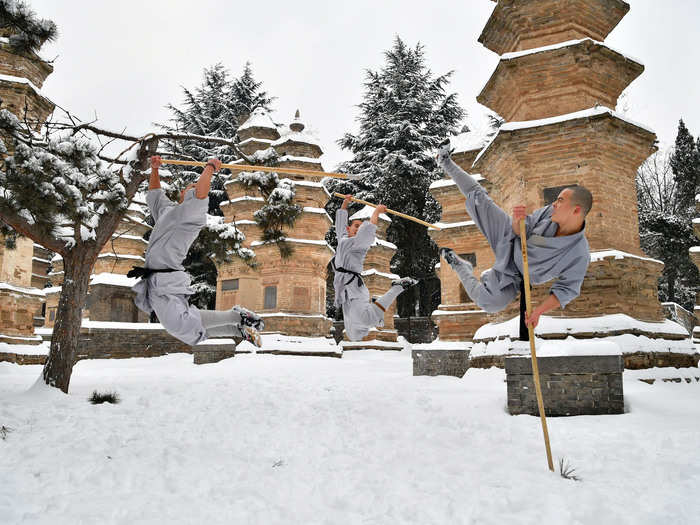
In recent years, the movements that are taught in the temple are more like acrobatics than proper combat.
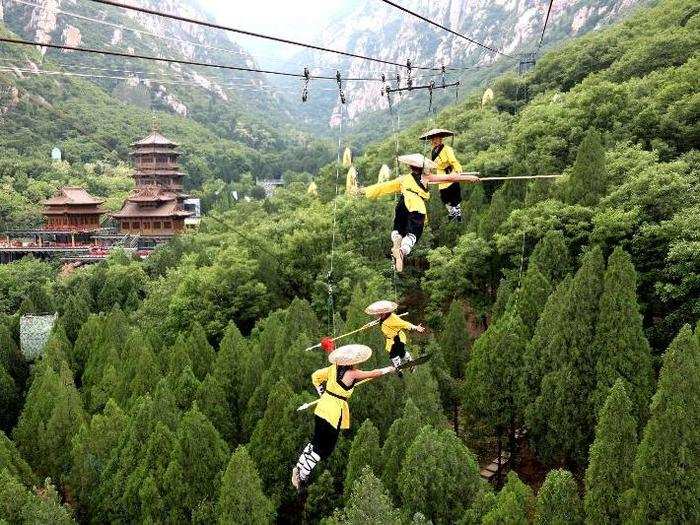
Source: The New York Times
Although some monks continue with traditional methods, like hanging by their necks from trees, or licking hot shovels.
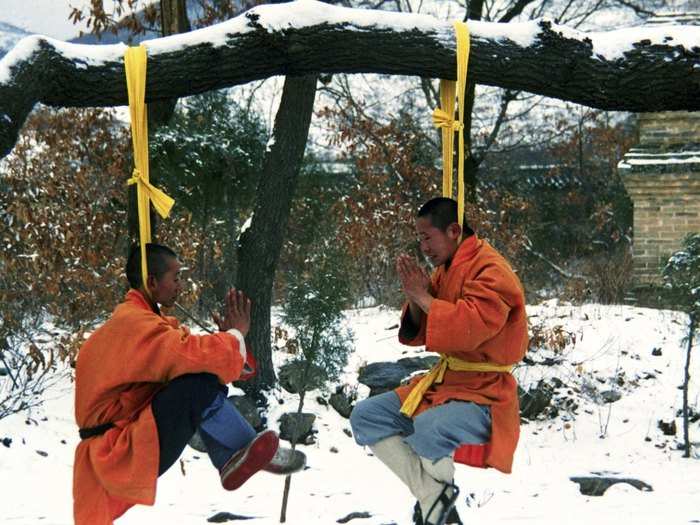
Source: The New York Times
There's also a kung fu practice where monks lift 50-pound weights with their testicles, which is called "iron crotch kung fu."
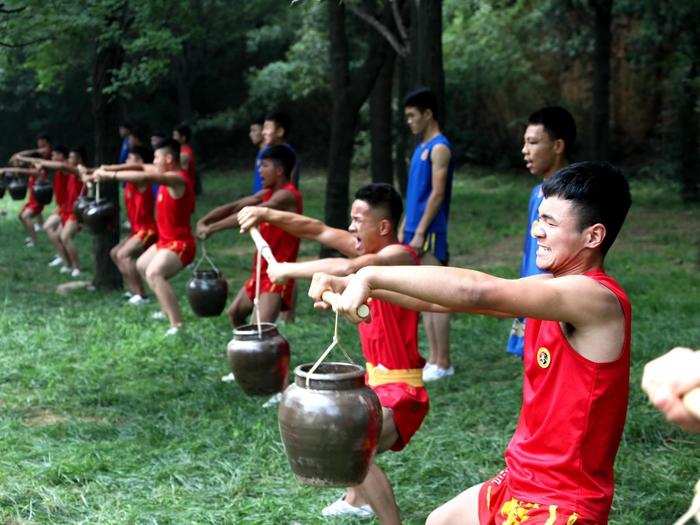
The temple's 400 students also learn math and how to read. Here, a student studies. On the wall to the left is a painting by Da Mo, the father of zen Buddhism and kung fu.
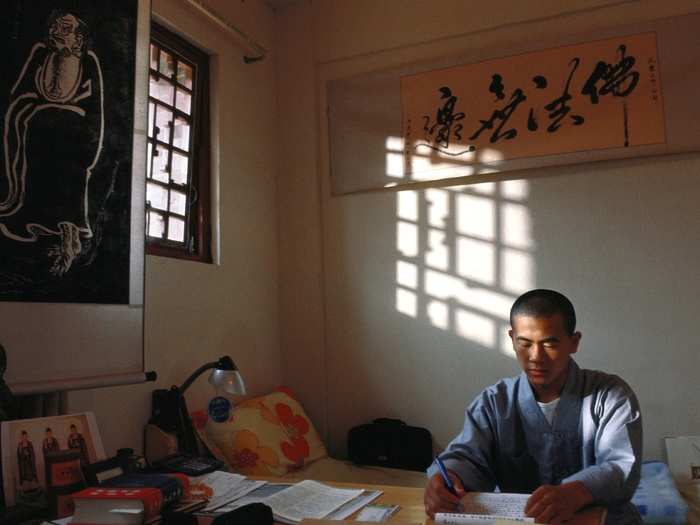
Sources: The New York Times
The temple's philosophy for punishment is physical rather than verbal. According to Bo, a former student who spoke to Huff Post, "harsh words can scar a person for life. Physical punishment is usually forgotten within a few days."

Sources: The New York Times, Huff Post
There are also about 20 girls in the temple. Shi told Huff Post that there has been an unbroken line of female nuns since the beginning of the temple. "The nunnery is not a large part of the Shaolin Temple, but I want to empathize that it has always been there," he said.
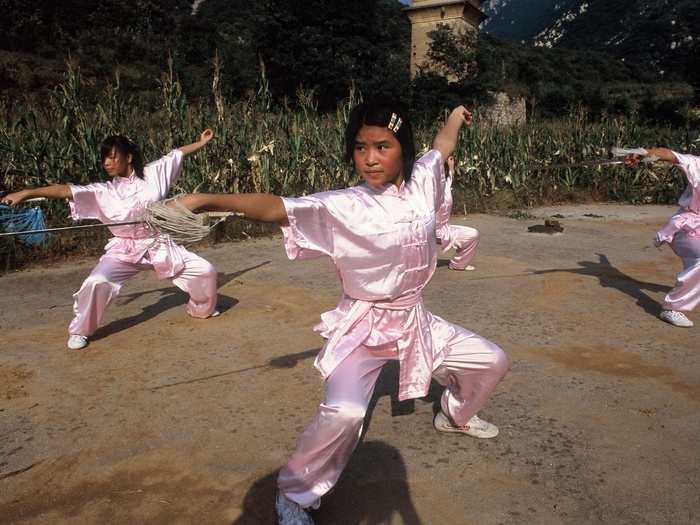
Source: The New York Times, Huff Post
It also has its own hospital that students visit regularly. Shi told Huff Post that disease was a part of life, but they did classify diseases in its clinic, and tried to find remedies for different ailments. For six years the temple tried to get the Chinese trademark office to register "Shaolin medicine" so that others couldn't profit off their name.
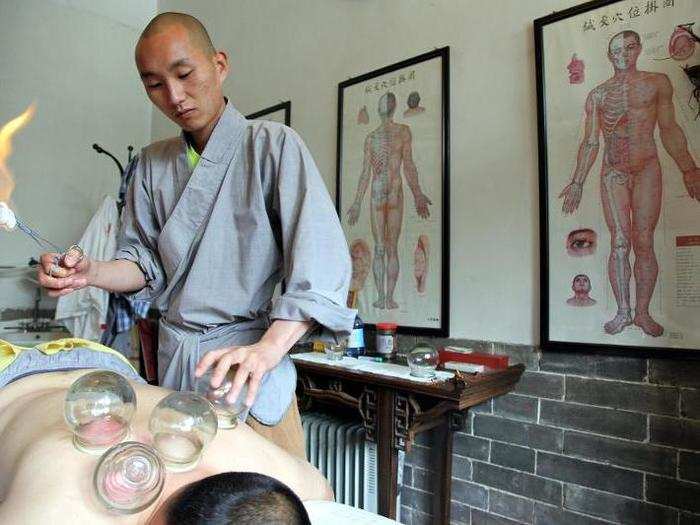
Sources: Huff Post, Huff Post, The Guardian,
When former monk Bo was asked why students weren't tired from the training, he said it was because their heads weren't filled with meaningless thoughts.
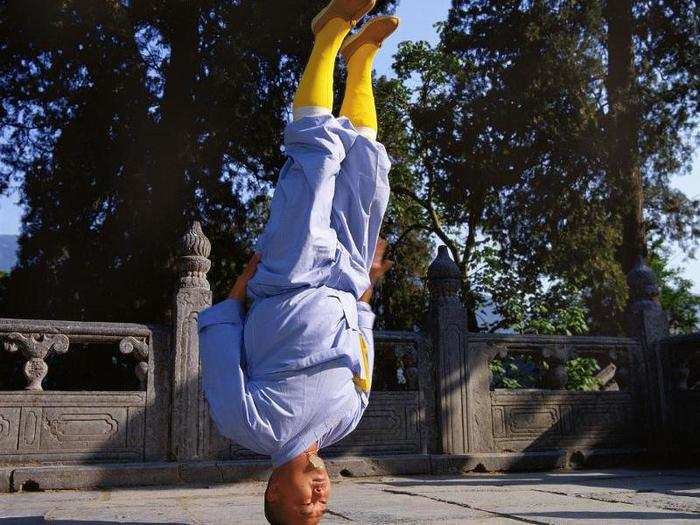
Source: Huff Post
But these meaningless thoughts could be seeping in. Monks now use mobile phones between training and mediation. According to Bo, the electrical signals from television, radio, and wi-fi, have weakened kung fu masters. "As a result masters are 15% less powerful than in ancient times," he said.
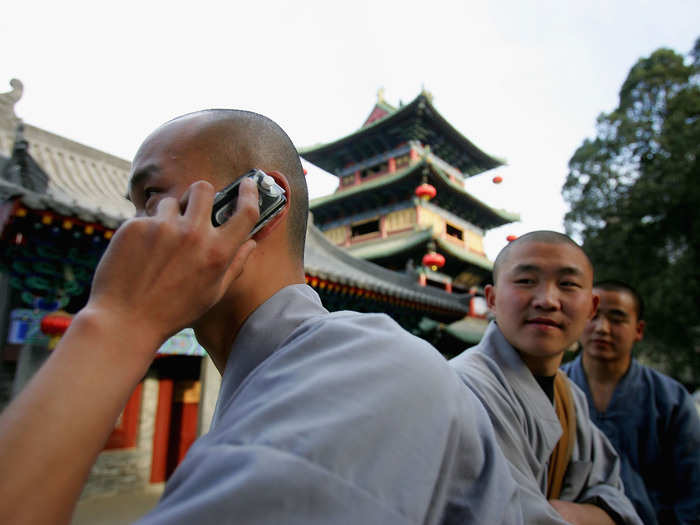
Sources: The Guardian, Huff Post
Shi, who is now called "China's CEO Monk," is largely responsible for changes in the temple. He wants to bring Shaolin to the world, but his attempts to blend commercialization and Buddhism have been controversial.
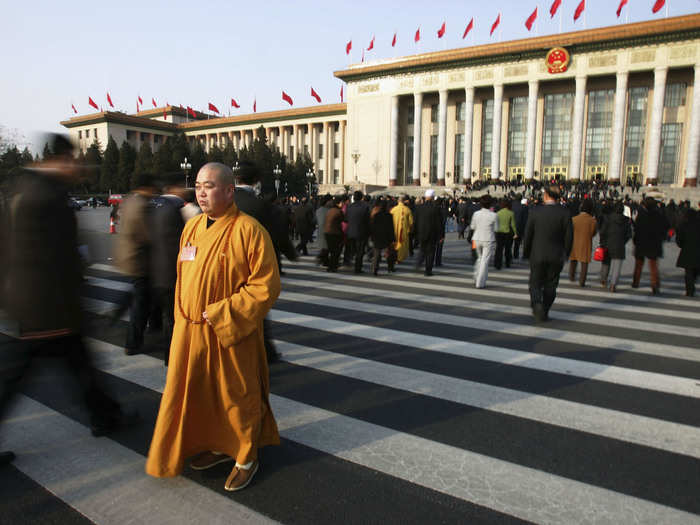
Sources: The New York Times, CNN
Tourism is one of his focuses. Now, millions of tourists visit the temple every year, paying about $14 to enter. But he's not sheepish about it. He told The Guardian, "Our life before was very tough. And different monks have always done different things. Some focus on meditation, some on acquiring knowledge, others on gaining followers. But it doesn't mean everyone has to take the same path. There are those who want to be managers. And that is OK, too."
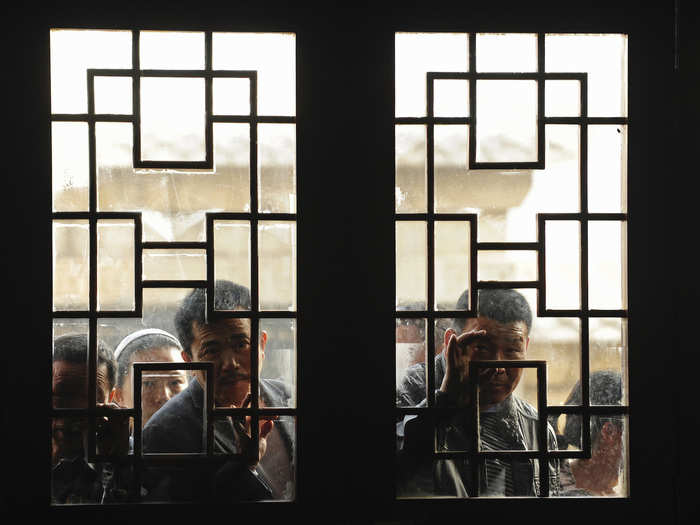
Source: The Guardian
Throughout the day, tourists can watch hourly kung fu shows. The Guardian reported that some tourists found the experience to be too commercial, while others grew bored with the shows, becoming interested only when a wooden stave was broken across the back of one of the warrior monks.
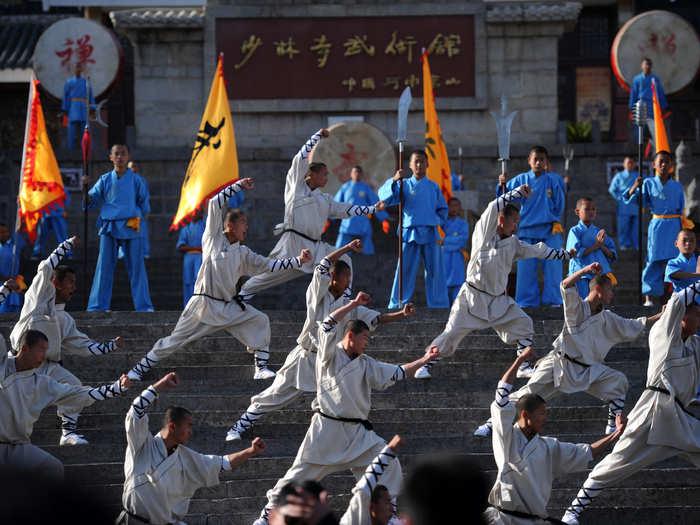
Source: The Guardian
Souvenirs are also sold to eager tourists. And if they can't get what they want on the day, they can visit a website, which is similar to Ebay, that the temple launched in 2008.
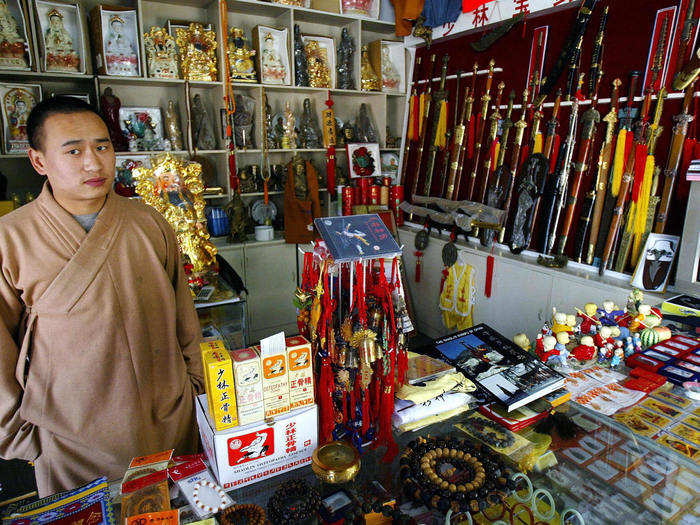
Sources: The New York Times, Telegraph, National Geographic
Shi has become something of a cultural ambassador for China. Here, he takes Russian leader Vladimir Putin around the temple. Putin made time to visit in 2006 during a two-day visit to China. It was a busy year for Shi. He also helped a media company produce "Kung Fu Star," martial arts' answer to American Idol.
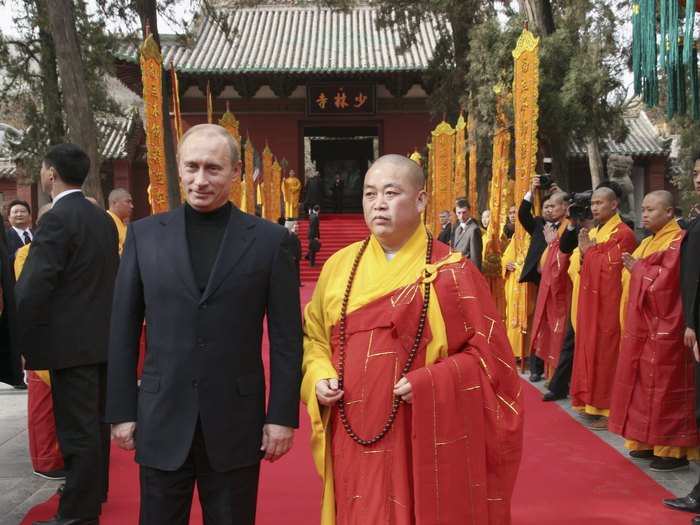
Source: Caixin Global
According to The Guardian's Tania Branigan, walking beside Shi in Shaolin Temple, when there are tourists around, is like walking with Donald Trump (before he was president) through New York's Time Square.
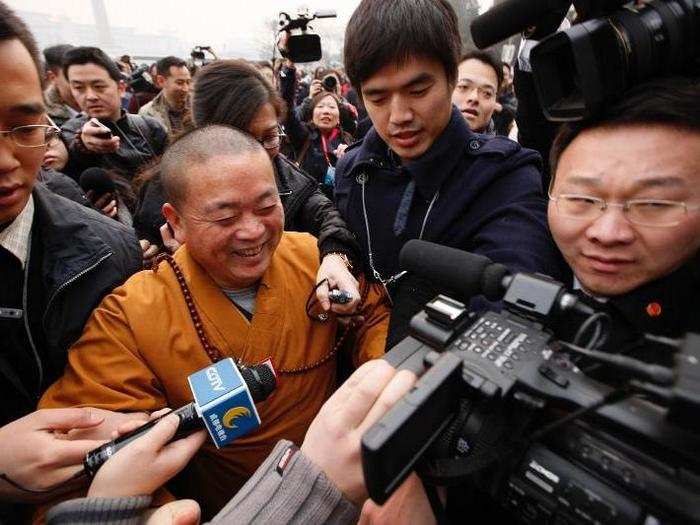
Source: The Guardian
Like Shi's lawsuit with the sausage company, he's carried on upholding the name. In 2007, the temple threatened to sue an anonymous person who claimed on the internet that a Japanese ninja had beaten a Shaolin monk in a fight. In 2017, the Shaolin Temple trademark was registered 713 times in 100 countries and regions.
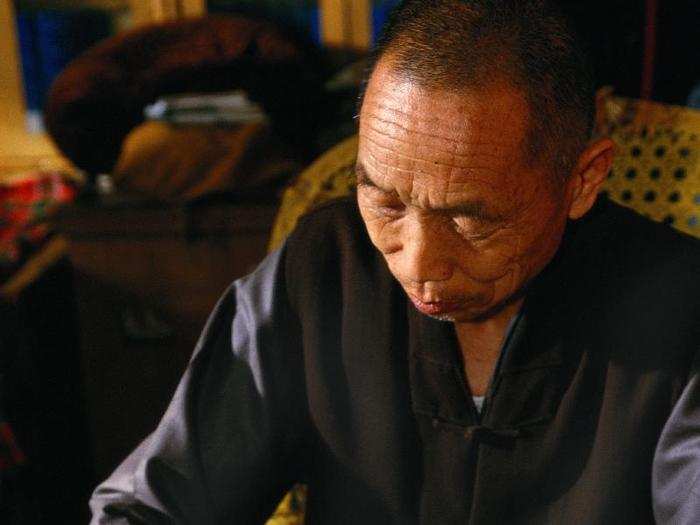
Sources: The Guardian, The Telegraph, Caixin Global
In 2010, Shaolin Monastery and its Pagoda Forest were made as a UNESCO World Heritage Site in 2010 for its beauty and cultural value. This made it an even more desirable destination.

Source: China Daily
Shi's efforts to make the brand global has worked. Around the original temple are over 50 kung fu schools, where 60,000 students learn kung fu, making the area "the biggest kung fu tribe" in the world. There are also 40 overseas franchises, and more than 1 million practitioners worldwide.

Sources: The Guardian, Independent, Caixin Global
But Shi's successes have led to him personally being criticized, especially about his love of the finer things in life, like European cars, Apple products, and robes that were specially made for him with gold lining, worth an estimated 50,000 yuan.
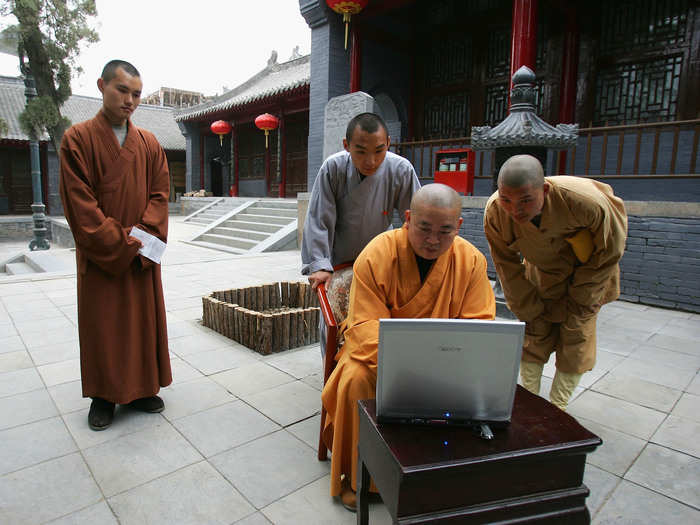
Sources: The New York Times, People's Daily Online
It's led to what some say is an identity crisis for the temple. The New York Times' Howard French wrote, "Is Shaolin kung fu popular entertainment or solemn exercise? Is it a money maker or tool of spiritual mastery? Is this idyllic site in the Song Mountains of Henan Province a contemplative retreat or a theme park? The short answer to all these questions is, of course, yes."
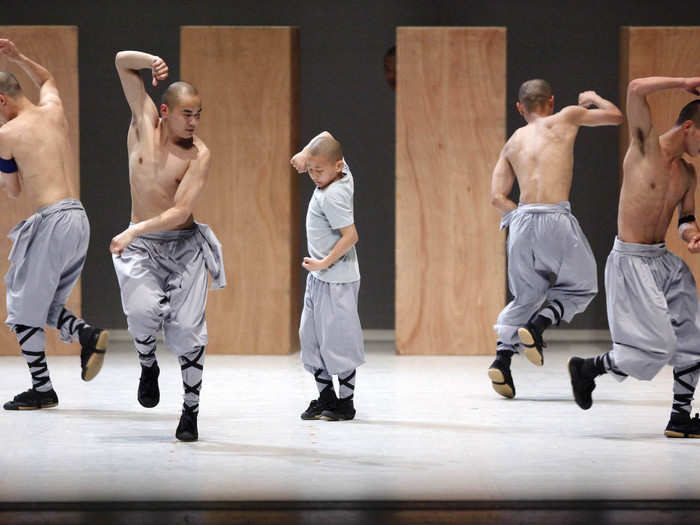
Sources: The New York Times,
And it made Shi a few enemies. In 2015, according to The Times, the temple grounds were filled with the sound of "snickering" tourists, rather than chanting or sticks breaking. They were laughing over allegations made by a person claiming to be a former monk, who said Shi embezzled millions of dollars and fathered two children, despite his vow of celibacy. After a 15 month investigation, the accusations were cleared.
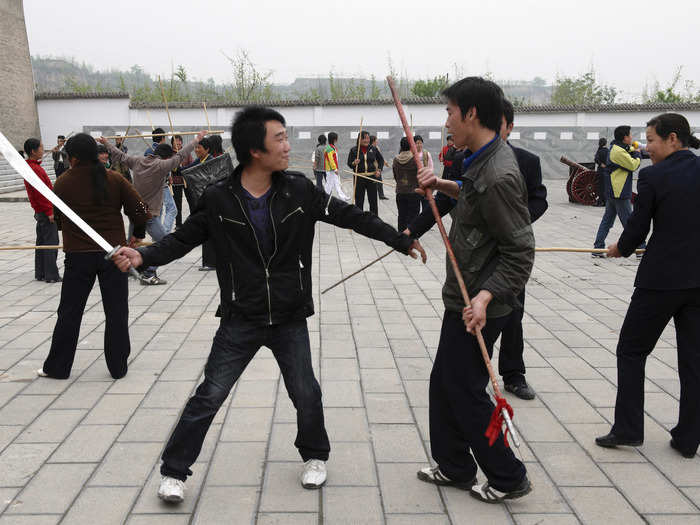
Sources: The New York Times, Caixin Global
Li Xiangping, who directs the Religion and Society Research Institute at East China Normal University, told The Times that people had misunderstood Shi's role. "They think monks should just study scripture really hard and sit meditating morning and night. But if you really want to promote Buddhism and influence society, you have to interact with the society," he said.
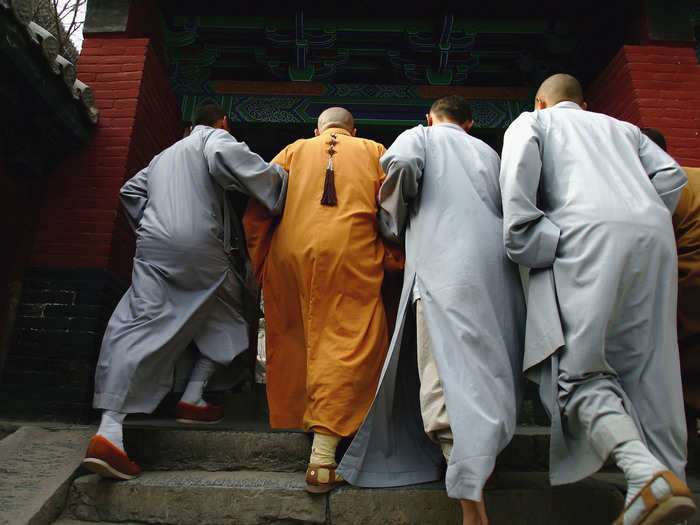
Source: The New York Times
Shi's next major project is a $380 million Shaolin complex, with a hotel, kung fu academy, temple, and golf course in New South Wales, Australia. In 2015, he defended his plans to the Chinese media: "If China can import Disney resorts, why can't other countries import the Shaolin Monastery?"
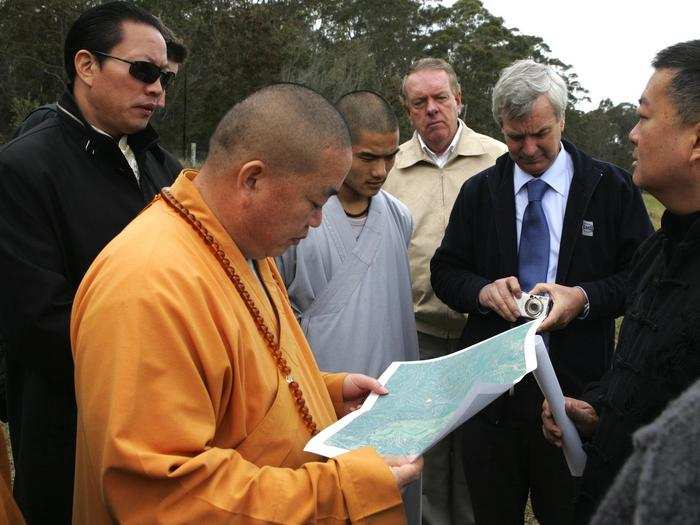
Sources: The New York Times, News.com.au
In 2018, to further relations with the Chinese government, the temple raised the Chinese flag for the first time in its 1,500-year history. The temple is one of China's most well-known symbols of Buddhism, and the government has been attempting to boost patriotism in religious organizations. But some have questioned the need for politics in the religious space.
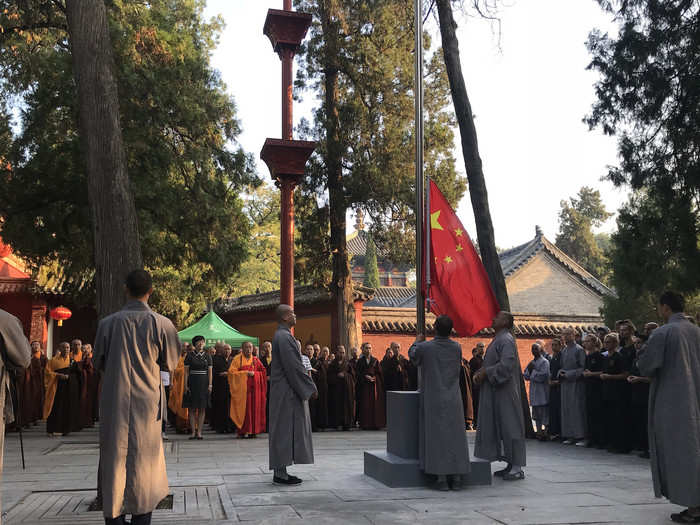
Sources: South China Morning Post, The New York Times
But Shi's being practical. He doesn't want the temple to be razed again. He wants Shaolin to flourish. He told Caixin Global that China's fate and the Shaolin Temple's were connected. "Only when the country is doing well will the temple flourish," he said. And as China continues to rise as a global super power, he might be right.
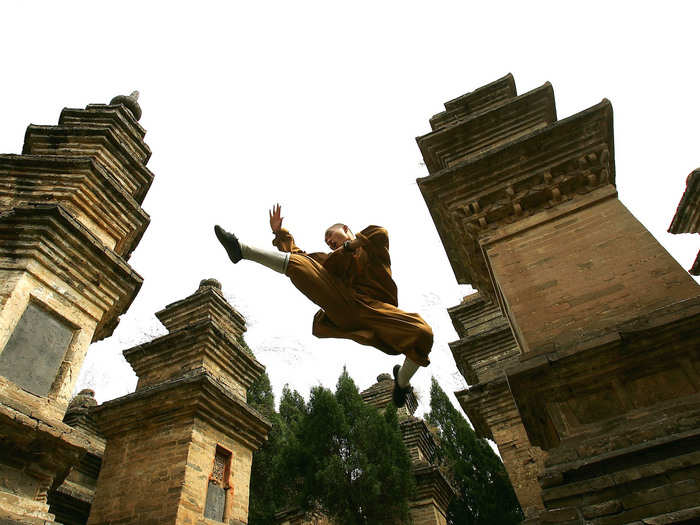
Source: Caixin Global
Popular Right Now
Popular Keywords
Advertisement
